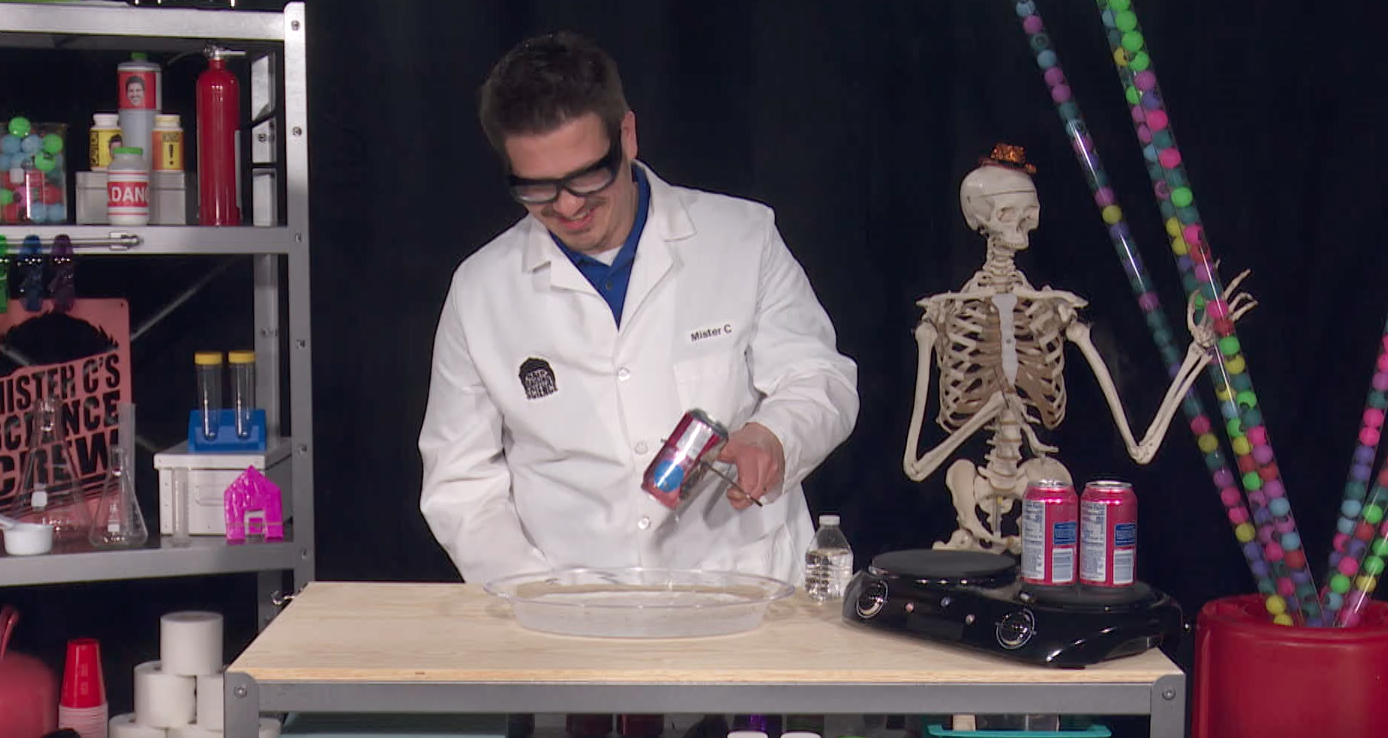DIY Can Crush

This crushing experiment explores the power of air!
- Stove top or burner
- Water
- Empty soda cans
- Tongs
- Large bowl
- Ice
Step 1: You’ll need parent help for this since you’ll be using a stove top burner to heat water.
Step 1: Gather materials.
Step 2: Fill a large bowl ½ way with cold water. Add several ice cubes.
Step 3: Add an ⅛ cup of water to the bottom of the can (just enough to cover the bottom).
Step 4: Place the can on the center of the burner. Once it’s stable, turn the burner on high.
Step 5: Once you see steam coming out of the can, wait one additional minute.
Step 6: Use your tongs and grasp the bottom of the can (Make sure your palm is facing up. This will allow you to quickly flip the can into the ice water).
Step 7: Quickly flip the can over placing the opening into the ice water.
So how’d that happen? The can was filled with water AND air! As the water in the can heats up, it changes from a liquid to a gas. We call this gas water vapor. The moving water vapor pushes the air out of the can. After you turn the can over into the water, it seals the can and traps the water vapor inside. The water vapor quickly cools and condenses. As the water vapor condenses back into water, it leaves empty space in the can. This empty space allows the air around the outside of the can push on the can and crushes it. The outside air is always there and exerts 14.7 pounds of pressure per square inch. But, it’s not able to crush the can when there is air inside of the can. Once that air inside the can is removed, the outside air easily crushes the can. You may have noticed that the can started to fill up with water. This is a result of the low pressure inside the can and the air pushing down on the water in the bowl. The water gets pushed by the air into the can to fill the empty space.
Aerospace engineers have to understand how pressure and a lack of pressure (vacuum) affect the performance of aircraft and spacecraft inside and outside of the earth’s atmosphere. Aerospace engineers design and test aircraft and spacecraft as well as missiles and satellites to learn how air impacts flight.
Implode is the opposite of explode. When something implodes, like the can, it quickly collapses inward. Did you know people implode old buildings when they need to demolish them so the destruction doesn’t hurt other buildings.
You just completed the can crusher activity. To make this a true experiment, try changing a variable?
- What might happen if you add more water to the can?
- What if you don’t add ice to the water?
- Does it change the experiment if we use a different kind of can or a water bottle? (Don’t heat a water bottle on the stove. You may get into a little hot water for that. Get it?)
- What if we change the water temperature in the bowl?
- Does the ice make a difference?
Watch the Air is Everywhere Music Video!

